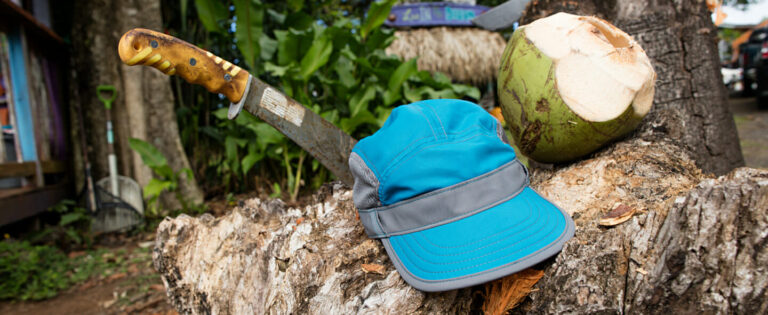Whilst thinking about mountain biking, the first thing that probably comes to mind is the bike and then maybe the helmet, clothes, shoes and so on. But, do you also think about bike protection? In addition to a bike helmet, cycling glasses and gloves, other things will also prevent you from getting bruises, grazes and breaking a bone whilst mountain biking. In other words, bike protection is super important and shouldn’t be neglected.
Body armour, knee pads and elbows pads
If you’re a mountain biker who rides at high speeds on steep and narrow downhill trails or who enjoys jumps at the bike park, then you know that you need to be in control and that unexpected falls can occur. Plus, roots, boulders, gravel and undergrowth usually cover the trails. So, depending on your riding type and style, you may want to equip yourself with different types of protection. For example, you may opt for lighter protective clothing, such as a body armour and knee pads, for freeride and trails. However, comprehensive protection, such as a protective vest, elbow pads, knee pads and shin guards are required for downhill, enduro and riding in the bike park.
A general overview of the different protectors, their functions and areas of use can be found in the following sections:
Knee pads
If your bike slips from under you whilst curving or when landing after a jump, your knees will usually receive the most impact. Not only do they absorb shocks but they may also get scraped on rough grounds. Knee pads therefore have multiple functions: they cushion the impact, absorb generated energy and also protect against skin abrasion on slippery surfaces. However, in order for the knee pads to do their job, they need to fit correctly and cannot slip off during a fall. As a result, mountain biking knee pads are usually pulled on like a sleeve. The sleeve will fit perfectly around the knee thanks to the non-slip silicone coating and hook-and-loop fasteners.
In addition, the major difference between various knee pads are their caps. For example, soft, lightweight caps feature a cushioning foam that is protected by a Kevlar, or another similar textile, outer shell. Heavier and more durable types of knee pads feature a hard-cap usually made of durable plastic. Generally, soft caps are more breathable, while hard caps offer maximum protection, optimal non-slip properties and durability. So, for downhill, enduro and bike parks, you should definitely use knee pads that are equipped with hard caps. And, for freeride, touring and trails, you may prefer more lightweight and breathable knee pads.
Shin pads
Slipping off your pedals can sometimes leave bloody marks on your shins. That’s why some knee pads reach all the way down to your shins to protect both the knees and shins against injuries. Plus, there are so many different types on the market, for example some with soft caps, hard caps or a mixture of both (e.g. the knees have a hard cap, whilst the shins have soft padding without a cap). There are even knee pads with removable shin guards available. However, shin guards, such as the ones used in football, are not common in mountain biking. In the case of mountain biking, the focus is placed on the knee pads; shin pads are rather used as a protective extension.
Elbow pads
When your bike slips sideways, your elbows can be at risk of being dislocated. So, the design and function of elbow pads are similar to that of knee pads. In addition, many companies, such as IXS, Poc or Leatt sell elbow pads that match the corresponding knee pads in terms of their area of use and design. And, not only do elbow pads defer in the cuff length but also in weight and breathability, similar to that of soft and hard caps.
Back protection and protector vests
In addition to head injuries, injuries to the back and the spine are a serious risk for mountain bikers. And, falling over the handlebars can lead to an unpleasant impact, pain and danger to your body. However, whilst wearing a body armour, it’ll absorb the energy of the fall thanks to the cushioning foam padding. Now, let’s take a look at the different models: some feature a lightweight design and are meant to be worn under a bike shirt or MTB jacket. Others are rather breathable softshell vests that are equipped with a removable protector in the back area. In addition, there are some body armours that are designed with a hard outer shell (“turtle design”) and others that are rather soft and flexible. Plus, designs with solid plastic can prevent your back from “overstretching” and can protect you against sharp-edged stones and roots. Softer designs are comfortable and are suitable for daily use.
Protective jackets
Protective jackets provide the best possible upper body protection. They’re equipped with both cushioning parts and hard caps and not only protect the complete arms, including elbows, forearms and shoulders, but also the back, chest and ribs. Typically, these protective jackets are worn directly over a breathable functional shirt, so that the jacket fits as snug as possible. Mountain bikers typically like to pull on a breezy donwhill jersey over the jacket. Thanks to their design, the other protectors cannot slip and will always fit perfectly. So, this comprehensive protection will provide you with maximum safety during dangerously speedy descents and falls.
However, protective jackets can be both uncomfortable and too warm for freeride and touring and are better suited for fast downhill rides, difficult off-road trails and in bike parks. Plus, modern protective jackets are usually equipped with an attachment option for neck braces. When combined with the corresponding full-face helmet, the neck will be very well protected against injuries.
Protective trousers
Thanks to impact shorts, falls are only half as painful whilst training and practicing new jumps. These fit snug and are unobtrusive when worn under normal MTB trousers. Plus, they feature cushioning inserts at the thighs, hips, seat and the coccyx to provide optimal protection at the areas which are not protected by knee pads or protective jackets. As a result, the impact shorts are perfect for downhill, bike parks and also for four-cross racing. Plus, mountain bikers are typically happy to take on the additional weight and comparably poor breathability in exchange for extra protection.
The best protectors for women, men and children
When selecting protectors, you may need to compromise between different factors, such as protection against injuries, freedom of movement, weight and breathability. For example, the most protective jackets, impact shorts and knee pads with hard caps are heavier and less breathable. However, companies such as O’Neal, Evoc and Komperdell are constantly trying to improve the breathability of their protectors by using both durable mesh and breathable fabrics to make them more lightweight and comfortable.
For enhanced comfort, the protectors are ergonomically adapted to men, women, teens and children. As a result, they’ll sit perfectly on the body whilst on the bike and stay in the correct position even during a small “slide” or fall. The only thing worse than not wearing any protector is wearing one that keeps on slipping and that can easily come off during a fall. So, you should invest in high-quality protection that can be fitted to your size and also offer lots of mobility and comfort.
How to store and care for bike protectors
Many mountain bikers own different types of protectors depending on the type of tour or route they take. And, after a strenuous tour, race or ride in the bike park, the protectors are usually quite dirty and sweaty. So, you should dry and air them out after every use. This will not only extend their life but they’ll also smell less strong in the long run. Once the protectors get dirty or start to smell after a few rides, it’s time for a proper wash.
Some protectors can be washed at 30°C in the washing machine. Even protective vests featuring a removable back plate can be thrown into the washing machine. But, washing them by hand with a mild soap and lukewarm water is more gentle on the equipment. It’s also not advised to wash both your clothes and protectors with hard plastic caps at the same time in the washing machine because this could damage both the caps and the machine. After having hand-washed the pads, they should be hung up in the shade till they are completely dry. You should also avoid placing them in the direct sunlight and tumble-drying them to prevent damage to the material.
As for storage, they should be kept in a dark, dry and well-ventilated room with no direct UV radiation. Here, they can survive winter or wait a while till your next ride.
Conclusion
Oftentimes, we start thinking about protection once it’s too late – once we’re already filled with bruises, abrasions or having broken a bone. So, you should definitely think about this beforehand to enjoy your mountain biking adventures to their fullest!








